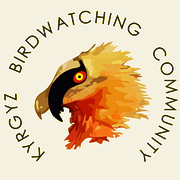search
classification
|
basic information
|
video
|
reports |
White-capped Bunting
Emberiza stewarti (Blyth, 1854)

|

|
|
|
2021-06-12
Jalal-abad region |
© Aziza Abdurakhmanova
|
|
Description
Male White-capped Bunting is rusty-chestnut above. Head, neck-flanks and craw are grey. Throat and broad eye-strip are black. Breast, fore-belly and flanks are same color as on back; other underparts are buffy-white. Flight and tail feathers are brownish. Webs of central pair of tail feathers, scapulars, secondaries and greater wing coverts have rusty edges. On outer pairs of tail feathers the white terminal spots occupy more than half of inner web. Legs are pale-horn-color, bill is blackish, eyes are brownish. In fresh autumn plumage feathers have broad pale edges which hid black and chestnut colors. Female is brownish dark streaked above. Uppertail is plain chestnut. Underparts are dirty-buff with narrow dark streaks and chestnut washed spots on breast. Juveniles are generally buffy with large brown spots. Sizes: male – wing 77-84, tail 67-81, tarsus 15.8-19.6, bill 8.8-10.6; female – wing 74-81, tail 68-72, tarsus 17.2-20.0, bill 9.3-10.3 mm. Weight: males 15.5-20.8, females 16.0-22.5 gr.
Biology
White-capped Bunting is common or in places accident breeding migrant. It inhabits well-heat rocky slopes with heaps of stones among shrubs and trees at attitudes 600-2200 m. In spring White-capped Bunting appears in second half of April, majority of birds migrate by mountains. Latest migrants observed at Chokpak Pass in early May. Breeding in separate pairs at 80-100 m from each other. Nest is built on ground under bush, stump or stone, sometimes in rock cracks or boulder excavations; nest is from dry grass stems and is lined with thin grass, honeysuckle bast. Female only builds nest. Clutches of 3-5 eggs is founded from May to early July. Only female incubates for 12-13 days. Both parents feed juveniles, which fledge from mid-June to end of August. Probably some pairs have two broods per summer. Autumn migration, which is going by mountains, begins in August. In foothills observed very rare.
References
"Птицы Казахстана" том 5. "Наука". Алма-Ата, 1974. Э.И.Гаврилов. "Фауна и распространение птиц Казахстана". Алматы, 1999. Gavrilov E. I., Gavrilov A. E. "The Birds of Kazakhstan". Almaty, 2005.





